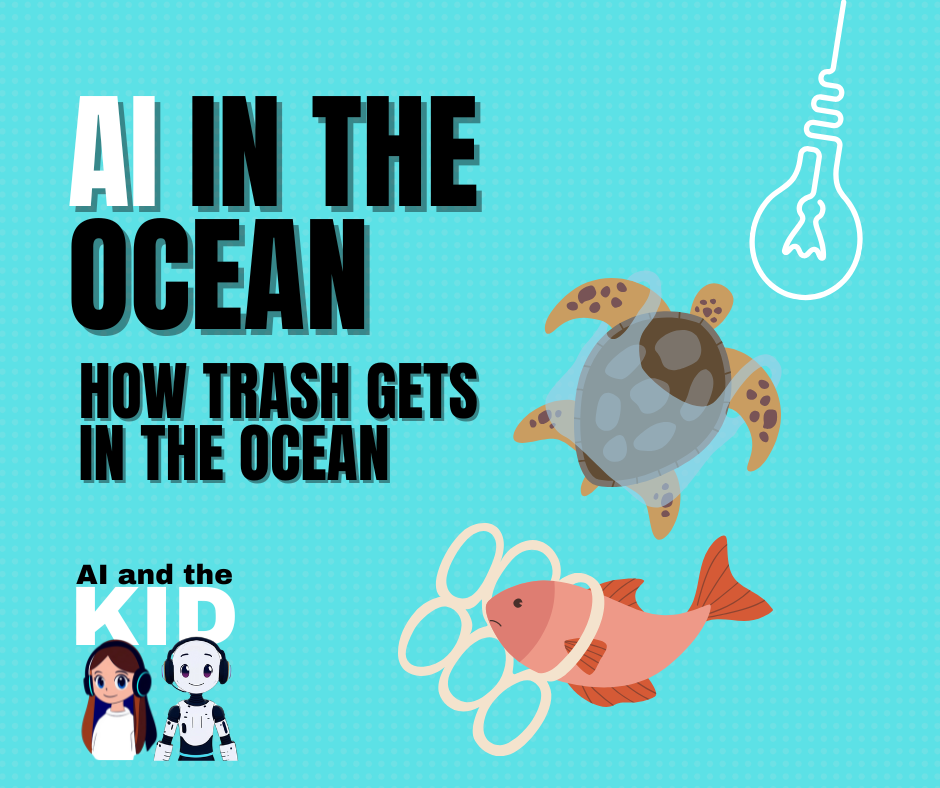Hello Creators of Tomorrow!
In this week’s episode of AI and the Kid, we dove deep (literally!) into how artificial intelligence is being used under the sea. From cleaning up plastic pollution to tracking whales, AI-powered robots are becoming underwater explorers, helping scientists protect our oceans and even learn more about climate change.
Listen to the Podcast!
Find AI and the Kid wherever you listen to podcasts.
What We Explored in This Episode 🔎
How underwater robots explore places humans can’t reach.
How AI helps track plastic pollution and protects marine life.
The difference between AI in space and AI under the sea.
Inspiring young ocean innovators like Anna Du.
Why Is AI in the Ocean So Important?
The ocean is HUGE—it covers over 70% of our planet! But a lot of it is still unexplored. That’s where AI comes in.
🔹 AI-powered robots like NUI (Nereid Under Ice) can dive into deep, dark, high-pressure areas where humans can't safely go.
🔹 AI helps us track endangered animals, study coral reefs, and predict dangerous storms like hurricanes and tsunamis.
🔹 It even helps find and clean up plastic that’s polluting the ocean.
AI is like a deep-sea detective—collecting clues, solving mysteries, and helping scientists protect our planet.
🐠 Try This Game: Train a Robot to Clean the Ocean!
Looking for a fun way to help the ocean and learn how to code? Check out this awesome game from Code.org!
In this game, you’ll train an AI-powered underwater robot to pick up plastic trash from the ocean floor. Just like the robots we talked about in this week’s episode, your robot will need to:
🧠 Think through each move
🤖 Train the AI robot to recognize fish
🌊 Help clean up our virtual ocean!
You’ll train while teaching your robot what belongs in the ocean and what needs to be removed to protect marine life.
🔗 Play now: Clean Up the Ocean – Code.org
Beyond the Podcast: Try This at Home! 🏡
Experiment 1: Name Your Own Ocean Robot!
AI robots under the sea need awesome names. Create your own robot explorer and give it a cool name. Try making it an acronym like:
WAVE – Water Analyzing Vehicle Explorer
OCEAN – Ocean Cleaning Explorer and Navigator
Draw what it looks like and list 3 things it can do to help the ocean!
Experiment 2: Ocean Trash Detective Game
Use a printed world map or a drawing of your own. Imagine you’re an AI robot scanning coastlines and rivers.
Mark places where you think plastic might enter the ocean.
Use colored pencils to show how ocean currents could carry the trash.
Talk with your family about ways we can reduce plastic waste!
Experiment 3: Make a Mini Coral Reef
Grab some modeling clay, paper, or recycled materials to create your own coral reef.
Then, use toy sea creatures or drawings to show how AI might help protect them!
Talk about what could hurt your reef—and how AI could be part of the solution.
🤖 Explore More with Gear
Want to discuss the episode more? Try out our custom chatbot, Gear. Gear can answer all your questions or help you explore the topics from this episode more.
Be Part of the Podcast! 🎙️
Have a question about AI? Email us at aikidmedia@gmail.com—your question might be featured in an upcoming episode!
🚀 Be creative, learn, and keep discovering—because you are the creators of tomorrow!
This newsletter was written in collaboration with AI. The main image was created in Canva by a human.






